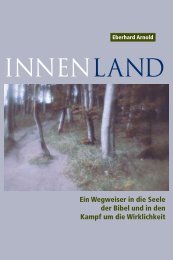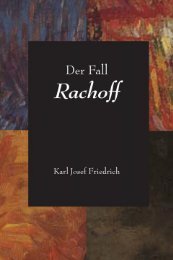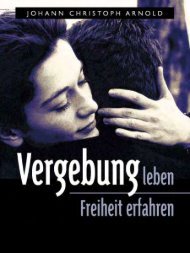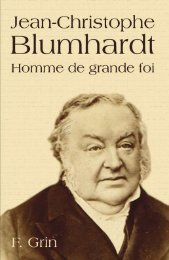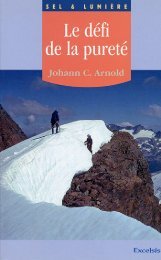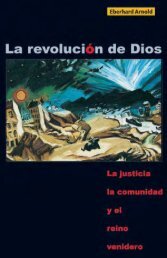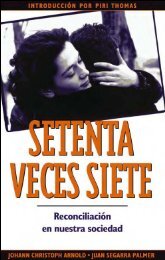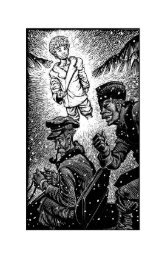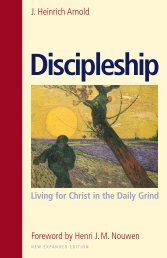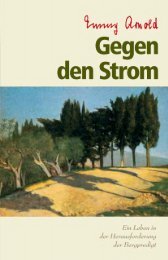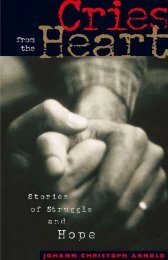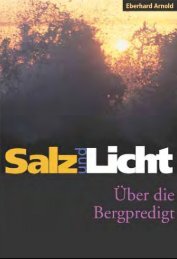Against the Wind: Eberhard Arnold and the Bruderhof - Plough
Against the Wind: Eberhard Arnold and the Bruderhof - Plough
Against the Wind: Eberhard Arnold and the Bruderhof - Plough
You also want an ePaper? Increase the reach of your titles
YUMPU automatically turns print PDFs into web optimized ePapers that Google loves.
<strong>Against</strong> <strong>the</strong> <strong>Wind</strong><br />
life…I ask you to see <strong>the</strong> Sannerz community as a focal point where <strong>the</strong> spirit of<br />
bro<strong>the</strong>rhood has found one of its possible outward expressions…” 29<br />
CarriEd to ExtrEmES?<br />
Even at its finest <strong>the</strong> Free German Bro<strong>the</strong>rhood never amounted to much more<br />
than a loose network of individuals. Unavoidable disagreements arose within <strong>the</strong><br />
Free German Union about <strong>the</strong> role of <strong>the</strong> Free German Bro<strong>the</strong>rhood <strong>and</strong> about<br />
<strong>the</strong> witness to “werdende Gemeinde.” Karl Sachse, a founding member of <strong>the</strong> Free<br />
Germans, had already clarified <strong>the</strong> dichotomy at <strong>the</strong> January 1926 conference: “A<br />
fellowship can never be more than a human endeavor, but Gemeinde is <strong>the</strong> work of 151<br />
God. Gemeinde is organic; fellowship is a human attempt at pracical expression.”<br />
A short while later <strong>the</strong> <strong>Bruderhof</strong> community <strong>and</strong> <strong>the</strong> Free German Union<br />
parted ways. The turn of <strong>the</strong> year 1926–1927 marked <strong>the</strong> last time a group from<br />
<strong>the</strong> Free German Union ga<strong>the</strong>red for a conference at <strong>the</strong> Rhön. In 1928 facions<br />
developed, <strong>and</strong> accusations ensued, targeting both Free German Union <strong>and</strong> Free<br />
German Bro<strong>the</strong>rhood leaders, as well as <strong>the</strong> “Sannerzers.” During 1929 <strong>the</strong> Free<br />
German Union gradually ceased to function. By its January 1930 conference <strong>the</strong><br />
story ended with <strong>the</strong> crucial ultimatum: ei<strong>the</strong>r <strong>the</strong> Free German Union or <strong>the</strong><br />
Free German Bro<strong>the</strong>rhood; ei<strong>the</strong>r acion or contemplation. <strong>Eberhard</strong>’s protests<br />
against <strong>the</strong>se extremes fell on deaf ears. Erich Mohr still hoped that <strong>the</strong> corpse<br />
of <strong>the</strong> Free German Union could be resuscitated. But <strong>Eberhard</strong> responded, “Not<br />
every death leads to resurrection. The decisive question is whe<strong>the</strong>r it is <strong>the</strong> death<br />
of <strong>the</strong> crucified one; this death leads to resurrection.” Proposals for <strong>the</strong> dissolution<br />
of <strong>the</strong> Free German Union followed quickly. The Free German Union brea<strong>the</strong>d<br />
its last even while everyone stressed <strong>the</strong>ir good will. 30 At this point <strong>Eberhard</strong>’s<br />
connection with Erich Mohr came to an end.<br />
In <strong>the</strong> final analysis it was painfully apparent that <strong>the</strong> <strong>Bruderhof</strong> ’s lifestyle<br />
based on faith <strong>and</strong> commitment would never be compatible with <strong>the</strong> Free German<br />
Union’s uncommitted “community of principles.”




